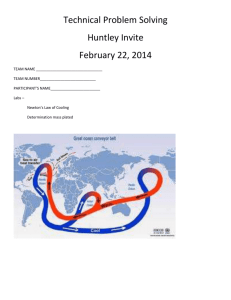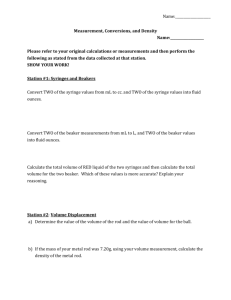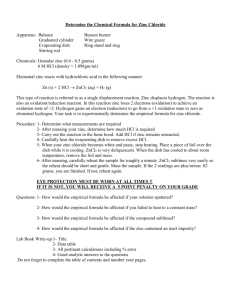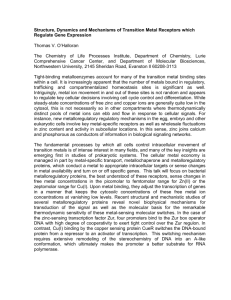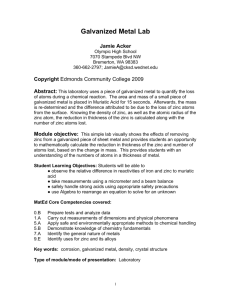Determination of the Thickness of Zinc on a Piece of Galvanized Metal
advertisement
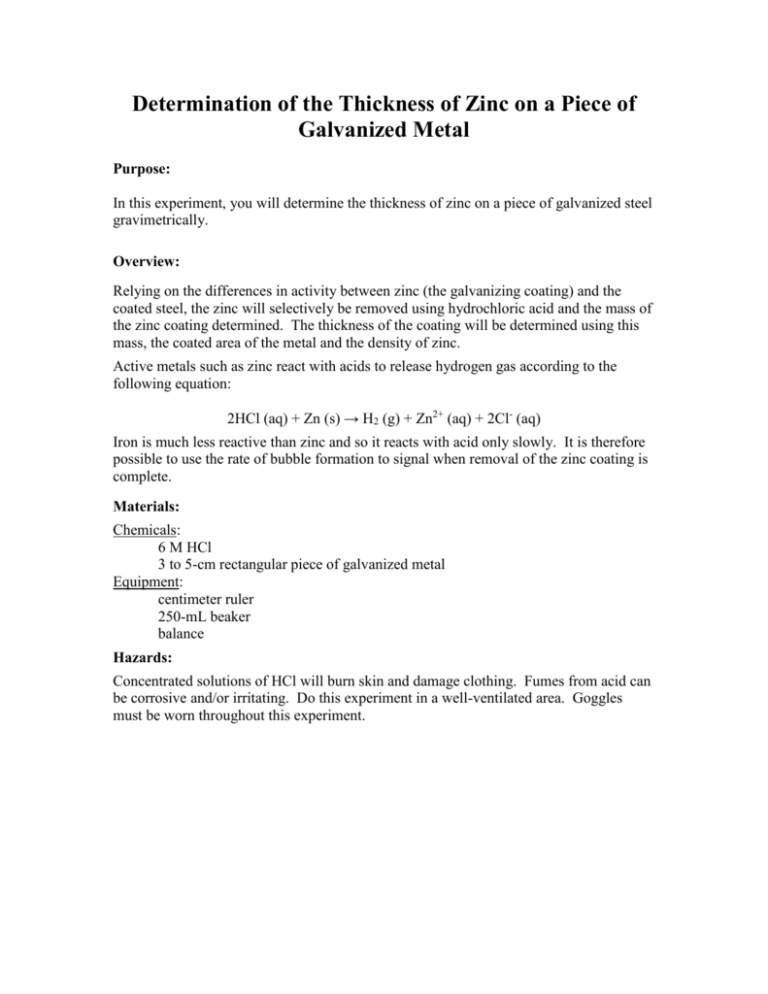
Determination of the Thickness of Zinc on a Piece of Galvanized Metal Purpose: In this experiment, you will determine the thickness of zinc on a piece of galvanized steel gravimetrically. Overview: Relying on the differences in activity between zinc (the galvanizing coating) and the coated steel, the zinc will selectively be removed using hydrochloric acid and the mass of the zinc coating determined. The thickness of the coating will be determined using this mass, the coated area of the metal and the density of zinc. Active metals such as zinc react with acids to release hydrogen gas according to the following equation: 2HCl (aq) + Zn (s) → H2 (g) + Zn2+ (aq) + 2Cl- (aq) Iron is much less reactive than zinc and so it reacts with acid only slowly. It is therefore possible to use the rate of bubble formation to signal when removal of the zinc coating is complete. Materials: Chemicals: 6 M HCl 3 to 5-cm rectangular piece of galvanized metal Equipment: centimeter ruler 250-mL beaker balance Hazards: Concentrated solutions of HCl will burn skin and damage clothing. Fumes from acid can be corrosive and/or irritating. Do this experiment in a well-ventilated area. Goggles must be worn throughout this experiment. Procedure: 1. Determine the mass of the metal and record. 2. Measure the dimensions of the piece of metal to determine its surface area. 3. Place the metal in the beaker and cover with the 6 M HCl solution. When the gas bubbles stop appearing rapidly, pour the acid and metal piece into a sink rinsing thoroughly with water. Dry the metal that remains. 4. Determine the mass of the remaining metal and record. 5. Calculate the surface area of the metal. 6. Given that the density of zinc is 7.14 g/cm3, calculate the volume of zinc on the metal. 7. Determine the thickness of the zinc coating. 8. Given that the radius of the Zn atom is 2.66 × 10-8 cm, calculate the thickness of the zinc coating in terms of zinc atoms.


